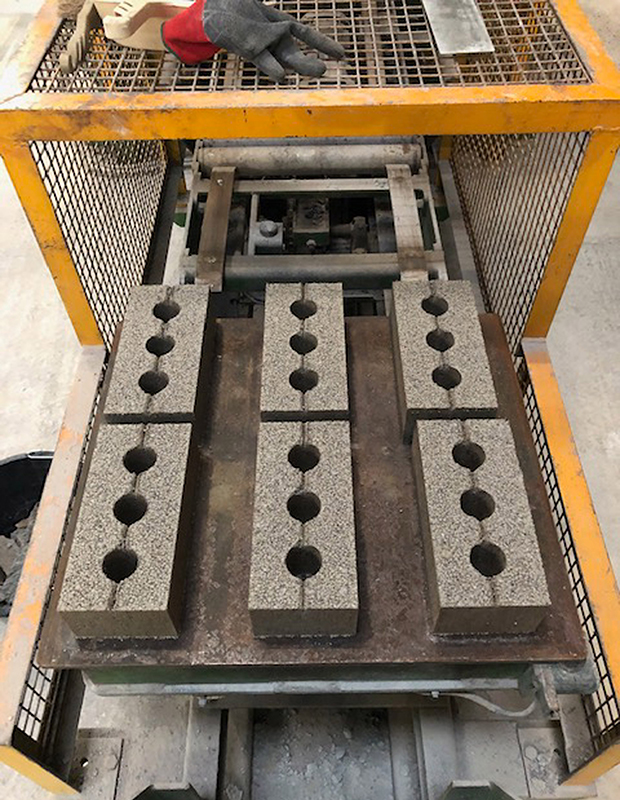

Originally from Brazil, Medero says she was drawn to civil engineering because it gave her passion for maths and physics a practical outlet. That’s why Gabriela Medero, a professor of Geotechnical and Geoenvironmental Engineering at Scotland’s Heriot-Watt University, decided to reinvent it. The building blocks of modern suburban homes would be familiar to the city planners of ancient Babylon, the bricklayers of the Great Wall of China, or the builders of Moscow’s Saint Basil’s Cathedral.īut the brick as we know it causes significant environmental problems, by using up raw, finite materials and creating carbon emissions. For thousands of years, the humble clay-fired brick hasn’t changed.

From the perspective of whole system design and resilient systems, I think CEB offers something better.Although we’re surrounded by millions of them every day, most of us don’t think about bricks too often. So yeah, if we only look at the cost from just the perspective of sourcing conventional bricks, maybe it won't compete. When combined with permaculture design, the excavation can be done to build swales for efficient rain water harvesting. Combined with a hollow-core, or insulated core wall construction, the end results are housing that are more efficient with heating and cooling. I think there are some heat retaining properties that CEB have that conventional bricks don't have. (Assuming you can keep the CEB machine in good repair but that is why it is open-sourced). It also means getting more CEBs to affect repairs can be sourced locally, and does not require a functioning global supply chain. With a CEB machine onsite, it makes construction of this type of material decentralized, without having to rely on a fragile, global supply chain. They did require some knowledge that are not widely disseminated (use of water to motar them together, and other construction techniques you would not use with conventional bricks). These machines have been built and had been in use for some time now. Open Source Ecology has open-source designs for a compressed earth block machine that can generate these things from the dirt on-site. That’s kind of the whole point of the mortar being used as a binder in the first place. Mortar is not easily removed from brick without damaging the brick. If there was a way you could dump a house worth of old bricks into one end of a black box and spit out reusable brick from the other end, you’d basically be printing money. I’ve spent many hours reclaiming these bricks from old houses and factories because for one, they look incredible, and two, they’re worth about a dollar a piece once they’re ready to be laid again (Pretty good money if you’re good with a brick hammer).

You can see these in just about every city’s downtown in Wisconsin.

Milwaukee, WI is famous for their Cream City bricks that were produced in the mid and late 19th century but once the unique clay beds used to create these bricks were gone, so were new Cream Cities. There is often huge demand for antique bricks because a lot of the unique clay deposits used to create the bricks end up being totally depleted.
K briq price how to#
The real holy grail of this industry would be figuring out how to reclaim the trillions of bricks already in circulation without needing human intervention. They’re right that reclaiming bricks as being labor intensive work. It’s rare that two customers would use the same bricks and we end up keeping the extras until we know we’re not getting called back in to do additional work. Storing them can also prove to be a problem, so much so that we literally throw away thousands of bricks we have left over from jobs every year. I work in the masonry trade, all of the materials we use are from brick yards and quarries that are local (~75-100mi radius) for the simple fact that transporting large numbers of pallets of brick over long distances is a logistical nightmare. the real problem isn’t creating these bricks, it’s building out the infrastructure to supply a significant demand. This tech seems like a good idea until you realize every brick is being produced in one spot in England. It would be interesting to see exactly how much CO2 was created in the process of creating a brick vs the amount of CO2 created during transportation.


 0 kommentar(er)
0 kommentar(er)
